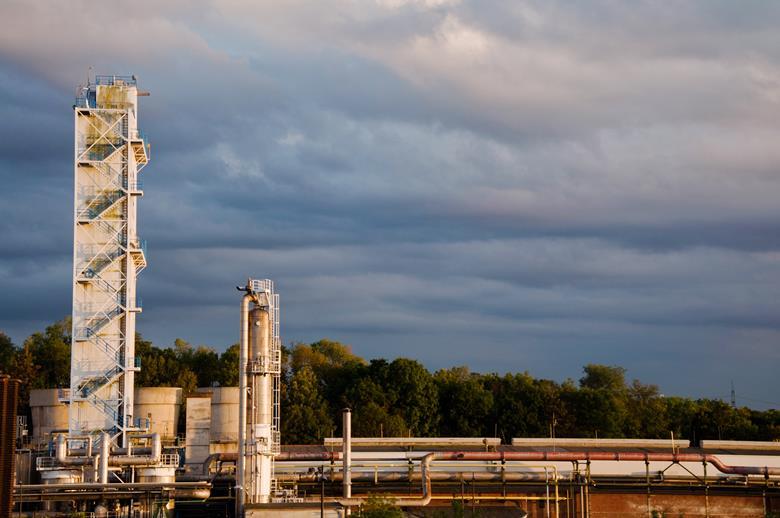

Fine tuning the technology
“A couple of years ago, I was involved in writing the H21 North of England report*,” says Andersen. “We analysed the cost, performance, and energy efficiency of SMR and ATR technologies. But that was a conceptual study and a forerunner of the tangible project we are now working on.”
”H21 considered nine trains of ATRs with a massive throughput. The equivalent thermal rating of the hydrogen to be produced on the current project, called ‘H2H Saltend’, is smaller, at 600 MW.”

H2H Saltend is a key component of the Zero Carbon Humber vision.
Andersen continues to say that, “We are running a competitive process to select technology providers and project execution partners for the blue hydrogen scheme. Their ideas will build on our vision and will determine the details of what gets built. We want a safe, low-carbon, low-risk process that will operate reliably and efficiently as part of the UK energy infrastructure in the coming decades. We are open to explore the most effective route to achieve those goals.”
Fine tuning of blue hydrogen production technology will, in part, come from a detailed understanding of the energy and chemical feedstocks required in any scheme. Both SMRs and ATRs can be combined with downstream shift reactors to optimise production of hydrogen or syngas. “The H2H Saltend project is focused on producing hydrogen for industry, power and ammonia”, says Anderson. “The major advantage of using an ATR would be the scale that can be achieved, with a high carbon capture rate and high energy-efficiency.”
A fundamental difference between the SMR and the ATR is that the heat for the reaction is produced within the ATR, whereas the SMR requires external heating from natural gas combustion. This means that the ATR has a single high pressure flue gas stream for carbon capture processing, whereas the SMR has both high and low pressure flue gas streams which require carbon capture. The size and cost of the carbon capture equipment can be reduced through high pressure operation, and this makes ATRs highly compatible with blue hydrogen production.

The perfect pressure
Operating pressure, and therefore product gas delivery pressure, is another aspect that differentiates SMRs and ATRs. The ATR can operate at a higher pressure. This is a benefit if hydrogen must be injected into a high-pressure gas pipeline for transmission to cities throughout Yorkshire and beyond.
At some point in the overall CCS scheme, carbon dioxide (CO2) must be pressurised to around 200 bar for injection underground. The carbon capture process yields CO2 at close to atmospheric pressure. The operating pressure of the envisioned carbon capture pipeline network at the Humber industrial cluster has not yet been determined and various options are under consideration.
It is conceivable that CO2 may be gathered at between 20 and 80 bar into a feeder pipeline network from carbon capture schemes associated with several industrial and chemical hubs on the Humber estuary. There may then be a single compression station to elevate the pressure to 200 bar for transmission offshore. The optimum network will depend on the mix and location of captured CO2 sources and the precise location of the CCS pipeline landfall.
Andersen confirms that, “High pressure pipelines are essential for long transmission distances to allow for the pressure drop as the gas flows.” They are also narrower, so they require less steel. But being at high pressure, the pipes require stronger walls meaning more metal or more expensive alloys.
“Deciding upon the perfect operating pressure for each leg of the CO2 pipeline grid is a complex task and the decision cannot be taken in isolation of other process parameters.”

Integrating air separation…
SMRs do not require pure oxygen. On the other hand, ATRs do. This means an air separation unit (ASU) must be built if the ATR technology is used.
To enable 600 MW of hydrogen production, the ASU would need to produce between 1,200 and 1,300 tonnes of oxygen per day. That would make it one of the largest in the UK.
Downstream of the reformer, some blue hydrogen schemes will also integrate a blue ammonia plant. This would require nitrogen as a chemical feedstock to react with the hydrogen to make ammonia. The nitrogen would be produced on the ASU alongside the oxygen. The ATR, ASU and ammonia processes are highly integrated and interdependent.
Integrated process optimisation of the scheme to produce hydrogen, syngas and ammonia, combined with the associated air separation and CCS will be a highly complex process. Optimising blue hydrogen production requires a paradigm shift to focus on synergies and move beyond bolt-on solutions. But energy efficiency and competitive economics will be the result. The result of holistic process integration will be significantly more than the sum of the parts.